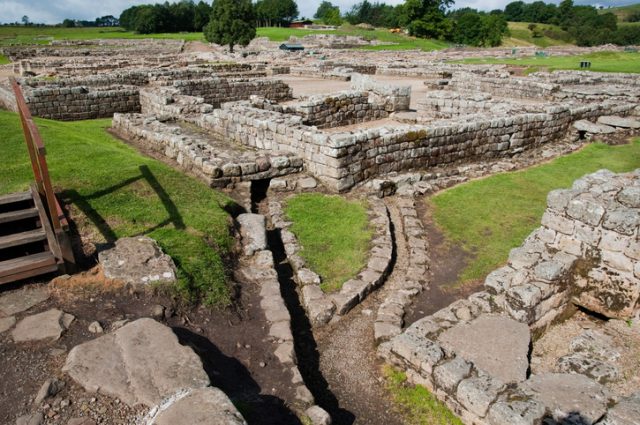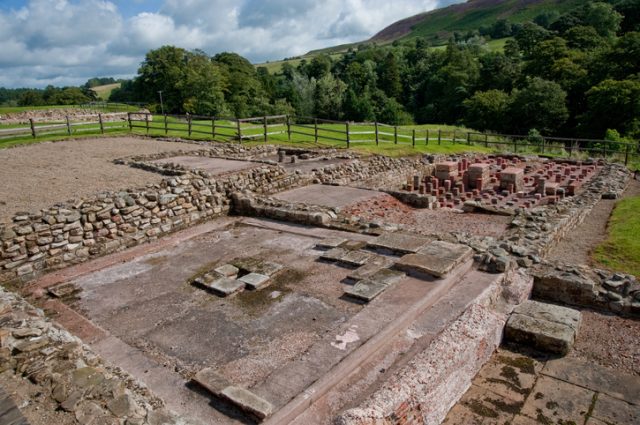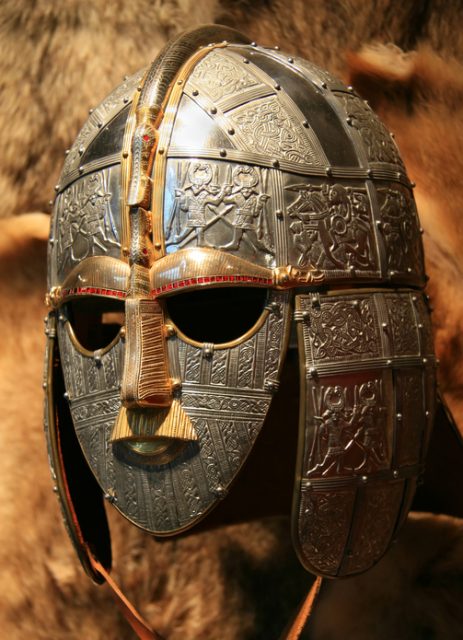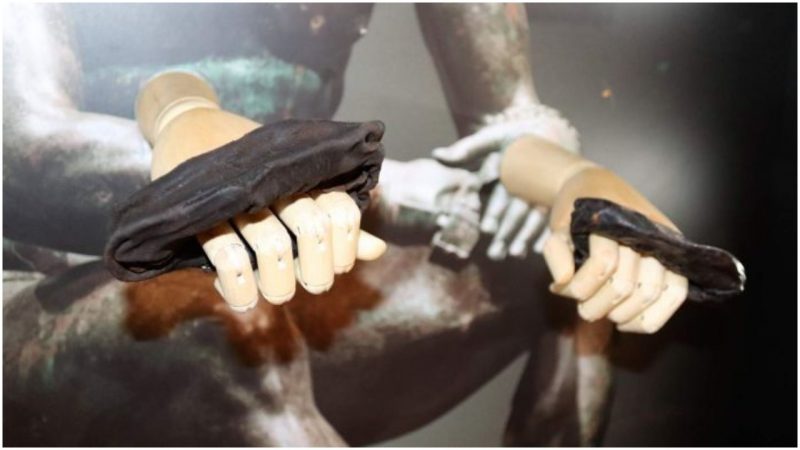When you throw something in the garbage, do you ever wonder where it might end up? Not the landfill of your town, but centuries from now. For Roman soldiers of ancient Britain, their garbage became prized museum exhibits.
Hadrian’s Wall, in the north of England, was once the border between the Roman Empire and the rest of northern Britain, including the “savage” Picts. It was a physical representation of the edge of the Roman world in Britain. Now a UNESCO Heritage Site, the 73 mile-long wall and its fortifications, or mile castles, were garrisoned by Roman soldiers since the 1st and 2nd centuries A.D.–even before Hadrian’s Wall was completed–and remained there in part until some time in the 5th century.
Directly south of the wall was an auxiliary fort called Vindolanda. It is particularly well known for the discovery in 1973 of a wooden set of leaf-tablets–since called the Vindolanda Tablets–which, when they were found, were the oldest surviving examples of handwritten documents in Britain. Containing information about military affairs, personal messages, and even an invitation to a birthday party, they were simply thrown away when they had served their purpose. They now reside as star artifacts in the British Museum.

In 2017, again at Vindolanda, a pair of Roman boxing gloves were found in excellent condition, together with more writing tablets, swords, clogs, and other shoes. The gloves would not have have covered a fighter’s hand completely, as modern boxing gloves do today, instead they would have fitted tightly over the boxer’s knuckles, offering some protection to the wearer. According to Dr. Andrew Birley, the Vindolanda Trust Director of Excavations, they were found in almost perfect condition.
Other items were found in similarly near-pristine states of preservation. This included two very rare cavalry swords, one of which was complete and still in its scabbard, as well as two toy swords. Archaeologists also discovered several personal items, such as combs, bath clogs, shoes, hair accessories, brooches, styluses, and even cloth fragments.

The items were preserved this well because they were buried under a Roman concrete floor that had been constructed around 30 years before the barracks at Vindolanda were abandoned, sometime around 120 A.D. Burying the items meant that they were deprived of oxygen, which would have otherwise rotted away organic materials like wood, leather, and cloth.
The value of the items–especially the swords–means it is unlikely that these pieces were simply cast aside like everyday trash. More likely they were left behind in a hurry, with soldiers and their families simply taking what they could and then getting out.
Other significant archaeological discoveries in Britain can also be attributed to a lack of oxygen, preserving the contents for future study and exhibition. In Newcastle in 2017, a medieval waste dump was uncovered, revealing pottery, animal bones, part of the fenced boundary of a home, and pieces of leather. They were preserved as the area was waterlogged, thus preventing the air from destroying the items.

Likewise, items of incredible significance have been found at the Sutton Hoo ship burial, which is possibly the most famous archaeological find in the U.K. While the highly acidic soil means that skeletal remains have long since vanished, the fact that the items buried with the bodies were deprived of oxygen meant that they could be preserved for the future. They were even protected from looters over the centuries, and their magnificence remained hidden until discovered by archaeologists in 1939.
Each of these fantastic finds provides an intimate look at the perhaps mundane day-to-day life in ancient Britain. They are not the burial troves of the rich (with the exception of Sutton Hoo). They are not frescoes and paintings depicting legendary feats. They are examples of items people used every day, without even necessarily thinking about it, and evidence of their daily existence. They are a tangible link to a world long gone.
Think about that the next time you throw something away.
Patricia Grimshaw is a self-professed museum nerd, with an equal interest in both medieval and military history. She received a BA (Hons) from Queen’s University in Medieval History, and an MA in War Studies from the Royal Military College of Canada, and completed a Master of Museum Studies at the University of Toronto before beginning her museum career. She has lived and traveled all over Canada and Europe.
